Following the 1951 event Dad began once again to look at the classified section of the Motor. He always went first to the ‘S’ section in the hope that he might spot another SS100.
It was during one of those wistful searches that he came cross the magic name: Squire.
We had never seen a Squire. Few had. It was rare. A picture of one had appeared in the SCCA Sports Car magazine in, I would guess, 1948 and was a car to be reckoned with, its beauty was supreme.
The car that Dad saw advertised was for Squire X101, the prototype. It had a 1 1/2 liter Anzani engine, 1500cc, twin-cam, supercharged and with a Wilson pre-selector gear box. Coachwork was Vanden Plas. It was the ultimate British sports car of the 30s. A phone call followed by months of correspondence secured the deal. It seemed that with each contact the price went up. Finally a price of 850 £ was agreed upon and the car shipped to the docks for the voyage to America.
I was ill at the time and I will always regret that I couldn’t go with Dad to pick up the Squire. So, Dad with some tools in his bag set off alone for New York on the train. A taxi took him to Pier 80 on the West Side where the little gem was sitting among crates. He was not able to secure any help getting it off the pier so he pushed it approximately one quarter mile to land where he then had to negotiate a busy four lane intersection to get to a gas station.
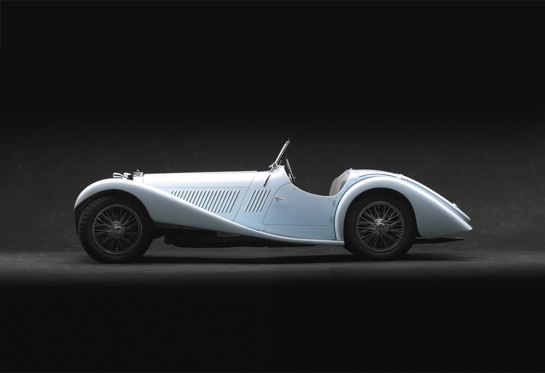
Davison had his eye on a Squire, and no wonder. This is the Davison Squire today, courtesy of the Simeone Foundation. Photo by Michael Furman.
Fortunately the previous owner had carefully listed all the instructions on how to mobilize the car. How many clicks of the spark advance, how many clicks of the throttle, how many pumps of the Kigas. After filling it with essential fluids he used the crank (as advised) for the initial start. The Squire fired up right away and Dad set off towards Detroit through New York traffic. The car was a tight fit. It was awkward at best and the only way to gain any room was by letting the air out of the bladder that was the seat cushion. He was now sitting on the floor.
He got a speeding ticket on the New York Thruway for running at 75 mph in a 50 mph zone. That was encouraging; at least it would exceed the speed limit. Then rain added to the woes. The wipers didn’t work, the side curtains were not included and the top was so ugly that he left it down.
A fender came adrift and that necessitated a stop at a tractor repair shop for some iron mongering work to get him home. Aside from getting lost, the trip was uneventful. Oh, how I wish I had been along to ride shotgun. In 1963 our friend, the late David E. Davis did a wonderful story in Car & Driver about Dad and his Squire. David E. said that it was one of the best stories he had ever written. He was a one of the garagists (as Dave Davis) before his climb to fame.
The Squire and our garage became a center of interest. The car became so well known that a letter arrived at our house addressed, “To the owner of the Squire, Birmingham, Michigan.” It spent at least one winter on loan to the Henry Ford Museum.
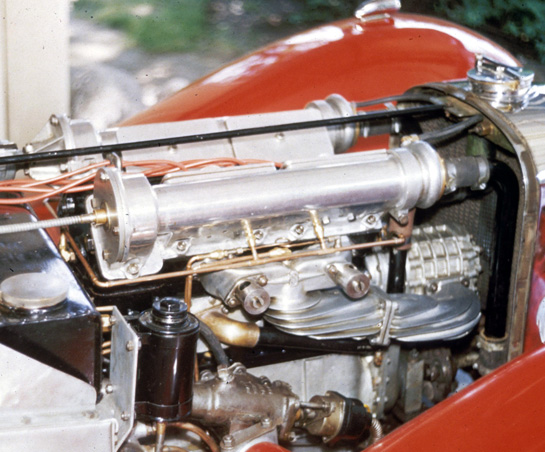
Alessandro Anzani (1877-1956) was an Italian who made industrial, aircraft and automotive engines in both France and Great Britain. Between 1935 and 1937, Adrian Squire built seven cars, all using a specially built Anzani R1 engine, which was much like the Alfa 1500. Aesthetically, the engine matched the dramatic and beautiful lines of the Vanden Plas body. Davison photo.
Dad participated in a number of rallies and one race in the summer of 1952. It was also used to take Dad to work. That was perilous as the car had no fan and sitting in traffic would bring the water temperature to the danger point very quickly, but he developed a system. By staying in the right hand lane of Woodward Avenue he could, when necessary, turn right on to a side street and go fast enough for the two water pumps driven off the front of each camshaft to do their jobs.
One evening a cabbie pulled up next to him at a stop light and shouted, “What’s the matter with that goddam thing, it sounds like a tractor?” Since there were so many mechanical noises beginning with the very radical cams, roller tappets with 40-thousands clearance, helical gears driving the camshafts, the blower whine and the exhaust, that was a fair comment.
Dad entered the car in one time trial held at the Studebaker Proving Grounds in South Bend, Indiana. It was raining and as we drove I was manipulating the wipers by hand; the top was at home where the ugly thing belonged. We were stopped at a red light and the car behind us ventured too close and his front bumper touched the rear of the Squire. It would have been right on the crisp line where the aluminum was folded over the wooden sub frame. Any dimple in the car would have been a disaster but right there would have been catastrophic. My Dad was by any measure, an even tempered man. But, in this instance he erupted. He grabbed a screwdriver and leaped out running to the back of the car. He screamed, “You stupid sonofabitch, if there is so much as a scratch on this car I will run this screwdriver through your hood and then through your heart!”
Fortunately there were no marks.
The time trial was the next day and excessive night running had drained the battery. Dad was forced to execute the required LeMans-type start by using the crank to spin the Squire to life. He received a round of applause.
As beautiful as it was, the Squire was nonetheless 17 years old and while it had been the ultimate in its day, Dad realized that it was not going to be a racing car. Therefore, the car was entered in the concours at Watkins Glen rather than the race itself. The Squire had to go to the Glen, it belonged there!
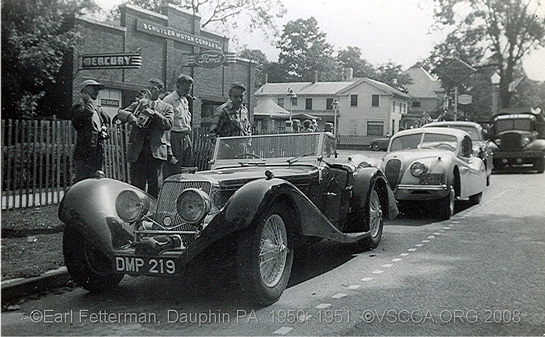
As we neared the Glen, Dad took the wheel. He wanted the thrill of driving through the streets in a car that no one had seen before. I can't tell exactly where the shot was taken but the photo credit tells who did it. It was undeniably beautiful and Dad was besieged with questions and comments—Eric Davison.
This was also the fall that I was off to university and, most likely the end of the times when I would be able to be part of all the automotive fun with my Dad. Dad wanted to take Mom this year so he asked me if I would do the unimaginable; drive the Squire to Watkins Glen while he and Mom drove her Ford. How could I say no? In reflection I think it was his way of sending me off to new adventures with a great memory. Plus, I would estimate that I am the living driver with the highest number of Squire-miles under his belt. I soon became the master of the pre selector gear box. It was simple enough to use and certainly a positive feature on such a rare beast.
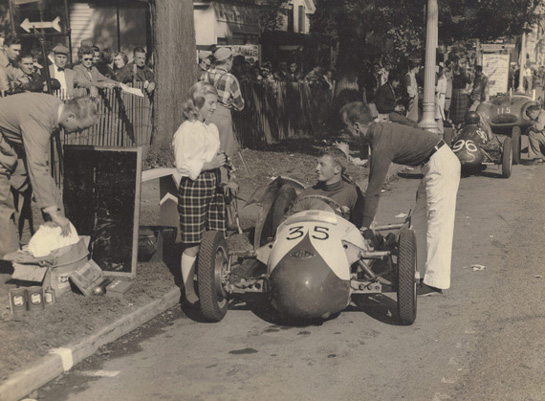
Dick Irish getting ready to go with his F3 Kieft. At left is his brother Bud who was doing pit crew time. Irish remembers the car and the girl. ‘The gal in the plaid shorts and white blouse is movie star Claudia Hall. Bob Said had screwed up and had TWO dates for the event so asked me to take care of Claudia.’ The Kieft, however, failed to start the race. Photo courtesy Richard Irish.
The events at Watkins Glen were horribly over shadowed by the tragedy that happened at the start of the feature race. Fred Wacker went just a little wide at the entrance to the first turn. Crowd control was spotty at best and his left rear fender sliced into some spectators who had been allowed past the rope barrier. A young boy was killed, the race was stopped and street racing at Watkins Glen came to an end.
However, the previous races, the Seneca Cup and Queen Catherine Cup events were loaded with a promising future.
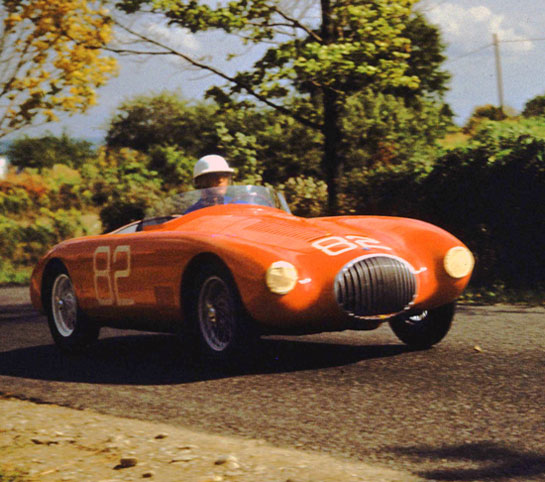
The OSCA made one of their first appearances in the US at the Glen, piloted here by Bill Spear who is driving s/n 1121. The MT4 would virtually dominate the 1500cc classes until OSCA met the Porsche at the 1954 Mille Miglia. Harold Lance photo.
John Fitch won the Seneca Cup race in a C-Type Jag. An OSCA driven by Bill Spear won the Queen Catherine Cup race followed by Jim Kimberly in another OSCA. A magnificent Simca special entered by its builder Californian Roger Barlow was third. (seen in the lead photo at beginning of article) Porsche made its Watkins Glen debut. There were numerous Siatas and a Giaur to add interest.
The tragically shortened main event featured the new Cunningham C4Rs and C4RK driven by Cunningham, Phil Walters, and John Fitch. Phil Hill was there driving a C-Jag entered by Charles Hornberg, the West Coast Jaguar distributor.
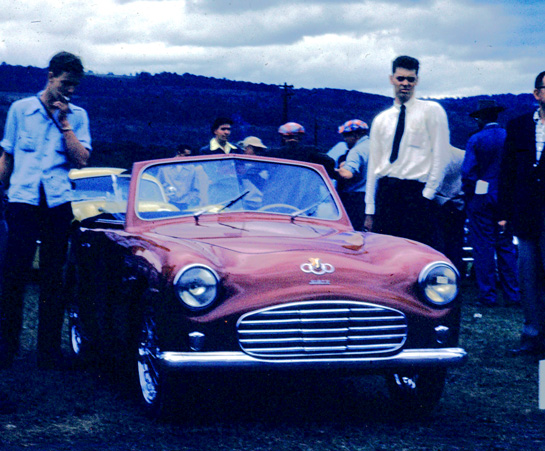
Rare and exotic at the Glen included this Fiat based Siata Amica of 1950. The body was fashioned by Bertone. The cars at the Glen were from all over the world; nowhere else in the world was there such a fascinating mixture of English, French, German and Italian cars. Harold Lance photo.
Watkins Glen was now a national event and what a pity it had to end as it did. But sports car racing had come of age, and despite the tragedies, would adapt and grow across the United States.
Being there for those early years was special for me, my father and my family. It was like a Woodstock event for car lovers with the crisp exhaust notes of racing cars filling the autumn air. At first it was cars that came out of WWII-induced moth balls. By the time 1952 rolled around there were purpose-built sports racing cars on the scene and drivers who would go on to national and international fame.
Cars, drivers and spectators were able to mingle unrestrained by ropes or rules. Rare and exotic cars were parked everywhere. They were just part of the wonderful scene that was generated at Watkins Glen.
Below are just a few of the cars that attended the Watkins Glen Road Races in the post war era, taken by Frank Shaffer.
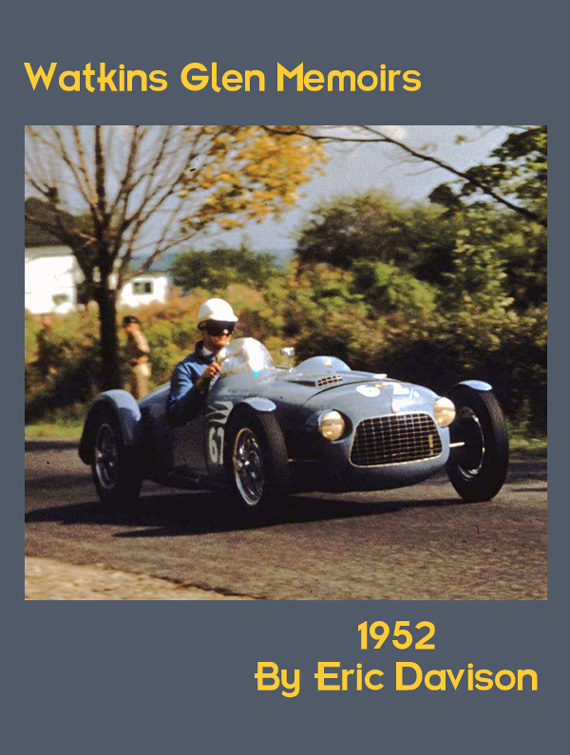

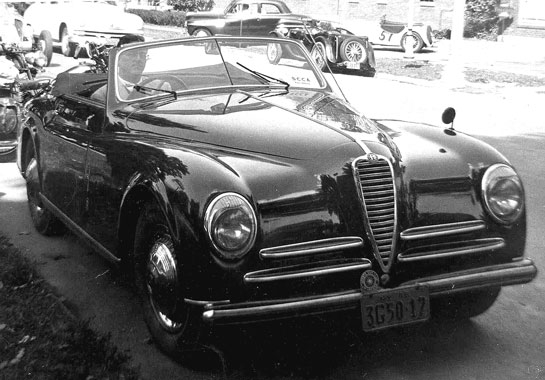
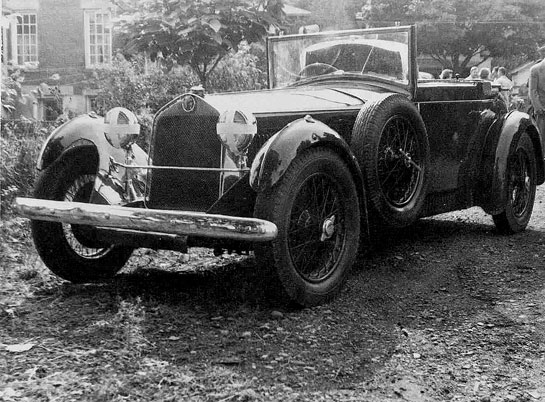
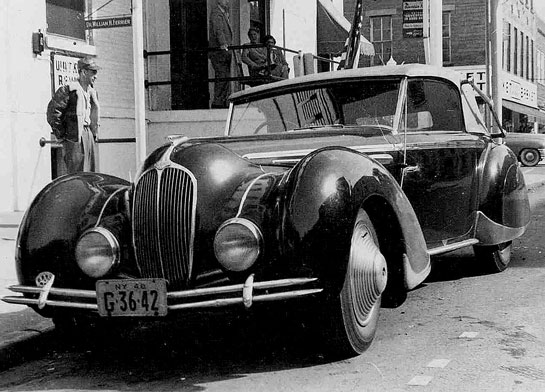
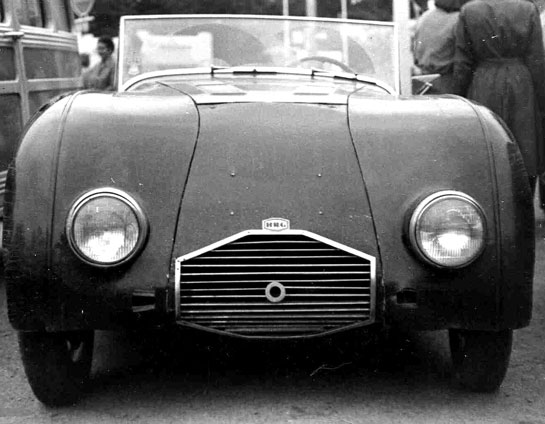
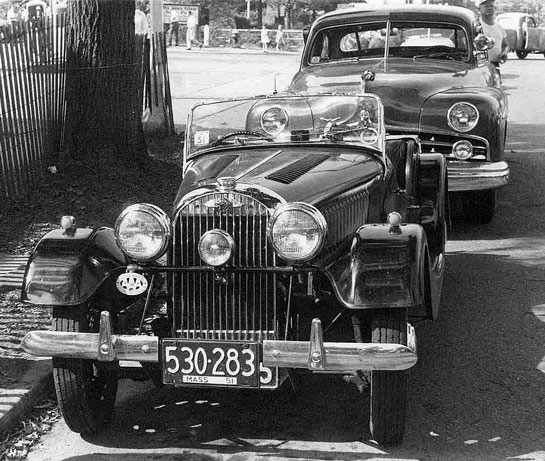
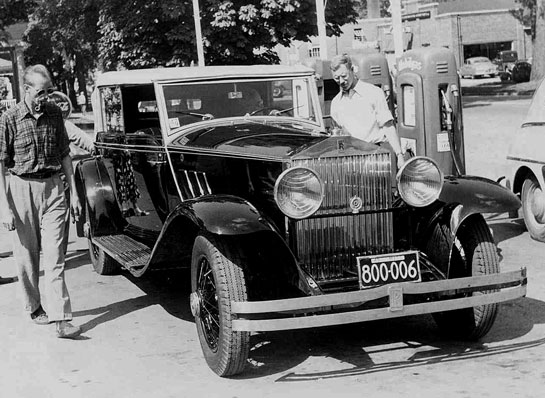
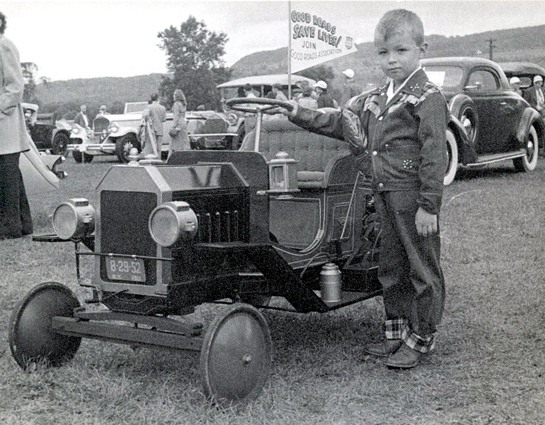
Have been enjoying sharing Eric’s memories very much, but was surprised to find this #6 in his series…can’t recall seeing three or at the most four previously. Must be something wrong with my sistem?!!?
Thanks anyway, Eric, for some great reading and photos and thanks, Pete, for having the wisdom to share them with us.
Rog Patterson
Holly Hill FL
It was interesting to see the HRG Aero pictured. I owned and drove one everyday for a while. I had swapped a Singer roadster for it. I enjoyed its’ cornering attitude on long sweeping turns, with the front inside wheel up in the air. It had a very rigid suspension and a very flexible frame. It was very reliable and loads of fun. I never had a top for it, which provided rainy day adventure. I installed a Scintilla Vertex magneto on it to get rid of some of the Lucas electrics. Don Falk
Thanks again, Eric. This stuff is great; I wish there was someone here (in Bridgehampton) with parallel experiences, memories, and photos. It was all happening here too, but Watkins Glen is still around and Bridgehampton is a golf course.
I was in LA going through the west coast version of those days, and we had our share of soon-to-be great drivers and cars, but there was obviously greater variety in the east. There’s a good Joel Finn book on Bridgehampton, but it isn’t as personal as yours. Keep it up! Earl
I heartily recommend the purchase of “A Gentleman’s Motor Racing Diary” that showed long ago on Speedvision. They’re 8mm movies now of course on dvds from England in the ’40s and ’50s with the photographer’s extensive and accurate notes read by his son as the cars go by. Takes me back–and I was never even there!
…and another thing, prompted by the comment with Dick Irish’s picture: One of the first two sportscar racing problems that I observed as a kid: Why did so many F3 cars never make the race? They were freakin’ motorcycle engines, for Pete’s sake! And Brit motorcycles were all over the place, and running! The other question, not germane to this discussion, was why was almost every Abarth in the pits jacked up with parts lying around? I thought for years Abarths was flimsy and undependable until I bought one.